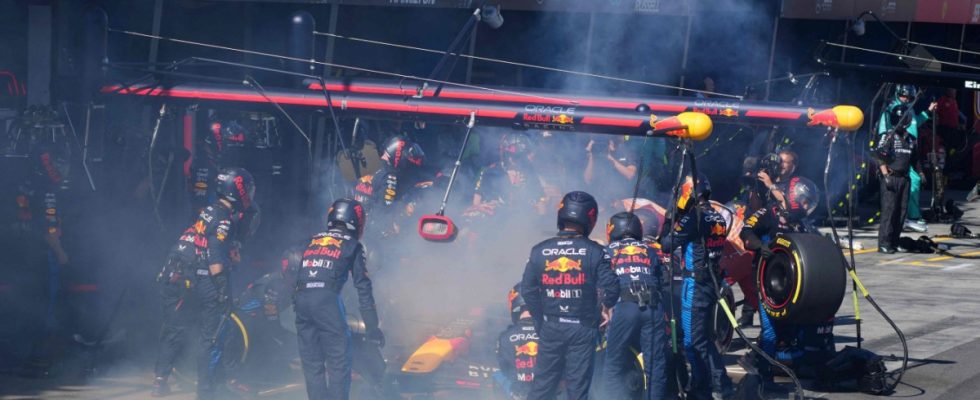Max Verstappen
Winning ten races in a row would mean that Max Verstappen would have set his own record – across all seasons. A win in Melbourne and the hat trick at the start of the season would have been perfect and the opponents would have been finally demoralized. Even the weather seemed to suit Verstappen: As with his surprising qualifying success on Saturday, it also got significantly warmer at the start of the race, which is what the tires and the Red Bull racing car like. But then it quickly got too hot and the right rear brake dragged and exploded finally, after it had smoked properly.
Flames in the rear, that matches the fire under the roof of the world champion racing team. In the duel with Carlos Sainz, the Dutchman immediately sensed that something was wrong: “A feeling as if I had been driving with the handbrake on.” His last retirement was two years and 43 races ago and also came from Albert Park. The champion will probably never be a fan of street courses again. He bore it with composure, even if the Australian media offered little consolation: “A welcome change for Formula 1.” Suddenly the World Cup is more exciting again than it has been for a long time.
Carlos Sainz Jr.
The Latin term appendix has even trumped the currently inflationary Formula 1 buzzword of tolerance. It is something quite unusual, even unbelievable, when a racing driver can win a Grand Prix 16 days after an appendectomy. Many people who are in top shape are exhausted by a road race like this. Carlos Sainz, however, has emancipated himself in several ways with his show of strength in Melbourne: As was the case in Singapore last year, he is the first to challenge Verstappen for victory. As has often been the case recently, he was better than his teammate Charles Leclerc and thus heralded a duel within the team Scuderia a.
Given the performance, you have to ask yourself in Maranello whether you’re letting the wrong driver go. And all racing team bosses must now have the 29-year-old on the list when the cockpits are awarded. The satisfaction is with smooth operator I can hear it in Formula 1’s voice: “Above all, I race to prove to myself that I can win whenever I get a competitive car and there is an opportunity. I will keep this approach for the rest of the year.”
Melbourne

Some come by tram, others by helicopter – the journey to the Australian Grand Prix shows that motorsport is socially acceptable across the population at the other end of the world. The school classes come on Thursdays, the fashion designers on Fridays, and the tourists at the weekend. The secret of success that led to the new attendance record (132,106 fans on race day, 452,000 in total): the races are celebrated like a festival, sunscreen is free for everyone. The proportion of women is 40 percent, which is also a record. And the hotel rooms are better booked than Taylor Swift, the new global benchmark for the importance of an event. Some Melbourneians believe that the Grand Prix is now more popular than the Australian Open. The contract with Formula 1 runs until 2025, and next year the race through Albert Park could be the start of the season again.
Fernando Alonso
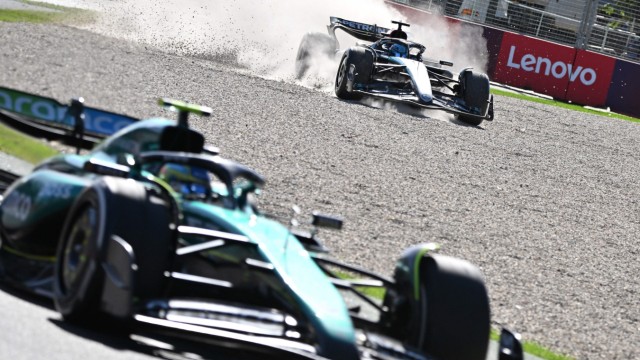
The innocence expression can be easily rehearsed in 380 Formula 1 races; even a self-confessed alpha animal like Fernando Alonso can’t do without it. Apart from Max Verstappen’s retirement, the most spectacular event in the third World Cup round was George Russell’s crash while chasing sixth place and Alonso’s Aston Martin.
The Brit first crashed into the barrier, then the wreck lay across the middle of the road. According to the race stewards, the Spaniard had done a so-called brake test; he released the accelerator earlier than usual in the braking zone, then accelerated again and then decelerated again. It’s frowned upon, but still common, but still extremely dangerous at 250 km/h. The faithful look was of no use to the 42-year-old; the vehicle data convicted him: he had suddenly reduced his speed 100 meters earlier than on his other laps, a clear defensive tactic. “An unpredictable maneuver,” complained Russell – and the judges imposed a 20-second penalty, which left Alonso only eighth.
Nico Hulkenberg
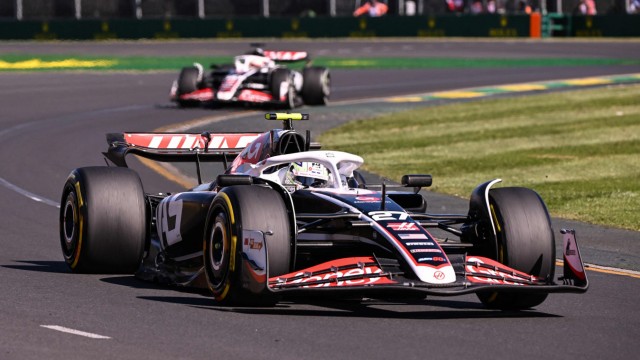
Without Günther Steiner, who can now say his sayings at gala evenings or on RTL, the Haas racing team is apparently doing quite well. The chance of points is always there when the top teams leave something behind. But then a backbencher has to be there too. This requires a bit of luck, as with Nico Hülkenberg’s quick stop during the virtual neutralization of the race, but also proper vehicle set-up. Hülkenberg delivered, finishing ninth from 16th on the grid, while his colleague Kevin Magnussen crossed the finish line in tenth. For the Thai Alex Albon in eleventh place, who complained about the hardness of the duel (“It’s so dangerous”), Hülkenberg only had scorn: “Sorry, our sport is dangerous. I didn’t even notice that because I was watching only forward.”
Mercedes
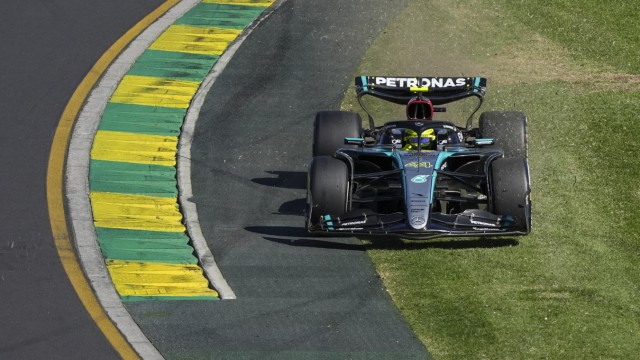
Every bad thing has something good: Lewis Hamilton, who didn’t make it into the top ten in qualifying, only had to struggle with the Silver Arrow for 15 laps. Then there was a thump and the engine stopped. “This is the worst start to a Formula 1 season I’ve ever had,” complains the record world champion. and should see his move to Ferrari confirmed in 2025. In the third attempt, the British-German works team failed to provide him with a consistently high-performance company car for the intended revenge against Max Verstappen. The fact that colleague George Russell had an accident shortly before the end reinforced the Silver Arrows’ bankruptcy.
Team boss Toto Wolff admitted: “That was pretty brutal. We’re going through some pretty tough times right now.” Then to improve yourself: “The times are super tough.” The fact that the McLaren customer racing team is the new third force is particularly painful, but it also gives the Austrian some hope: “If you do the right things, the whole thing can be turned around quickly.” So far, however, the technicians have only been going around in circles.
Oscar Piastri
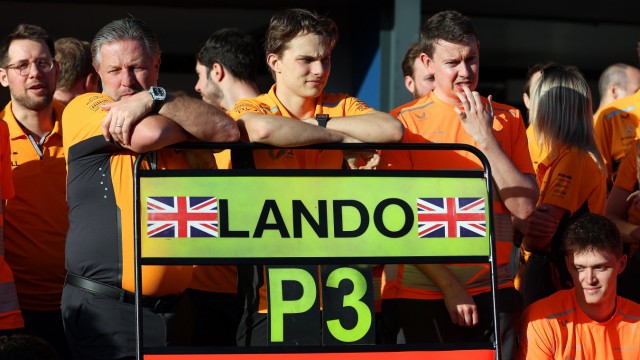
The curse that seems to lie over the Australian Grand Prix drivers when it comes to their home race has not been broken again: none have yet Aussie made it to the podium. Oscar Piastri, who finished fourth in Melbourne for the second time in a row, seemed pretty close. But then again far away. At the behest of the McLaren bosses, he had to let his faster teammate Lando Norris pass without a fight around the middle of the race. The 22-year-old doesn’t want to give in to frustration: “That was completely fair.”
His compatriot Daniel Ricciardo, who finished twelfth in the Racing Bulls racing car, had a much worse time of it and remained without points for the third time in a row. Apparently the team no longer believes in a comeback either of the 34-year-old permanent smiler – if things don’t go better by the Miami Grand Prix in May, he is threatened with being replaced.

